Last time, we ended with “Art is to make a thorough investigation of formal characters”. So is wine. Previously referred to five flavours in this site, these five form taste of wine. As I rewrite my sentences in my book or this site, are components in wine changed? It depends on the circumstances, the wine law of each country/region and of course, each producer’s philosophy. There are some treatments such as enrichment (chaptalisation: a method to increase alcohol by adding sugar) and acidification/de-acidification. For example, California wines tend to have higher alcohol, which is likely to make wine thick and degrade finesse, although good wines have a balance for us to drink comfortably.(Because their pH is lower and they keep acids, they are fresher in spite of their higher alcohol.) In a wine making process, however, to decrease the level of sugar producers even add water to must (base wine) in an extreme condition. Clark Robert Smith, a winemaker/owner in California, said that 45% of Californian highly-priced wines are removed alcohol using spinning corn column or reverse osmosis.[1] On the other hand, in Bordeaux and Burgundy, some producers who can afford plant investment use entropy evaporation[2] to concentrate must. Now we can say winemakers make a thorough investigation of formal characters, too. The article of this time will cover more artificial wines, i.e. lower alcohol wines.
[1] According to Wikipedia, the use of technologies such as spinning cone column or reverse osmosis was banned in the EU until recently, although they could freely be used in wines imported from certain New World such as Australia and the US. More recently, in OIV recommended winemaking procedures were modified to permit use of spinning cone column and reverse osmosis, subject to a 20% limitation on the adjustment. Some studies show that alcohol can mask flavours of wine, so alcohol removal techniques will be more necessary as global warming progresses. Some of producers in Bordeaux have already taken these methods. (Of course, they can take other measures against global warming, such as early/night harvesting, planting vines at a high altitude and canopy management. 〈Canopy management is the arrangement to control the sunlight that gets into the canopy. In cool regions the grapes need sunlight to ripen, so an open canopy will be adopted. On the other hand, in warm regions the grapes need some shade by leaves to keep good acidity, so a closed canopy will be adopted.〉)
cf. Dr. John Forrest of Marlborough in New Zealand is making low alcohol wines more naturally. Sugars in grapes that are fermented into alcohol come from the photosynthesis that results from sunlight on vine leaves. So he cuts off leaves during the ripening process and makes lower alcohol wines with natural flavours.
[2] Water that evaporates at 100 ℃ is evaporated at 20℃ under vacuum. Use this, vacuum the tank and warm the must to about 25 ℃ to evaporate only the water. Almost no damage to the wine as it is below the fermentation temperature of normal red wine.
1. Introduction
Our tastes have changed. Not long ago, people longed for heavy wines with intense oak flavours and high alcohol, and it is still easy to find that kind of wines in New World. Now, because the spread of the Internet has reduced the need for people to use their bodies, the world tends to focus on health. Healthy foods mean lighter calories and lighter foods go well with lighter wines. Both alcohol and residual sugar contain calories, and alcohol has more calories than sugar. There may be people who claim lower alcohol wines lack body and strength. But some of the greatest wines are low in alcohol, such as Hunter Valley Semillon, Portuguese Vinho Verde and German Riesling. It seems full-bodied wines are no longer fashionable. There is a movement for lower alcohol drinks in the world.
2. Definition of lower alcohol drinks
First, we need to know a definition of lower alcohol drinks (in UK here. The definition may vary from country to country).
・Low Alcohol: Drinks with between 0.5% and 1.2% ABV
・De-alcoholised: Drinks with less than 0.5% ABV
・Alcohol Free: Drinks with less than 0.05% ABV
・Non-alcoholic: Drinks without alcohol
An alcohol free and non-alcoholic drink may take the form of a non-alcoholic mixed drink (a ‘virgin drink’), non-alcoholic beer (‘near beer’) and ‘mocktails’ (the shortened name of ‘mock cocktails’). Mocktails are non-alcoholic festive blend drinks of fruit juices, syrups, cream, herbs and spices. In this connection, ‘reduced alcohol’ means drinks with 5.5% ABV.
3. How to make lower alcohol wines
To make lower alcohol wines, two methods are mainly used: vacuum distillation or reverse osmosis. In addition to them, spinning cone column is also used but it is much more expensive. (It is a form of low temperature vacuum distillation to gently extract volatile components from liquid. See pictures below.) These processes start with real wine and end with little or no alcohol wine by reducing alcohol. Also, there are other methods which control alcohol production instead of reduction, i.e. reducing sugar, stopping fermentation and fermentation using yeasts which produce less alcohol. Some say that wines made by these methods tend to have more grapey flavours than two main methods, but unlike grape juices they have wine-like acidity and body. In fact, lower alcohol wines differ from grape juices. While grape juice is the unfermented juice, lower alcohol wine goes through the same fermentation and ageing process as regular wine, only to have the alcohol removed at the last stages. This makes lower alcohol wine much less sugary than grape juice (because yeasts eat the sugar), but with the similar flavours to regular wine.
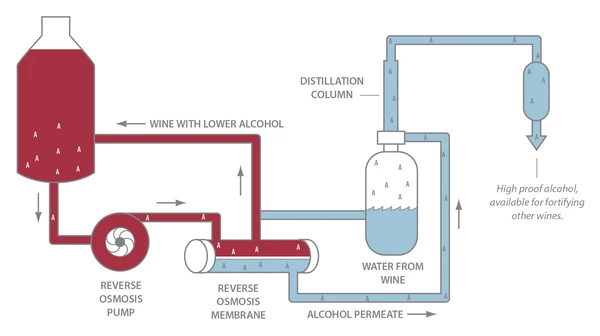
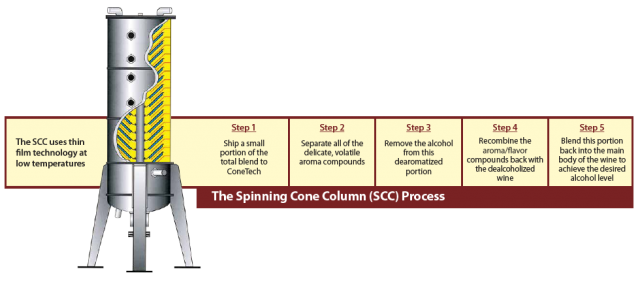
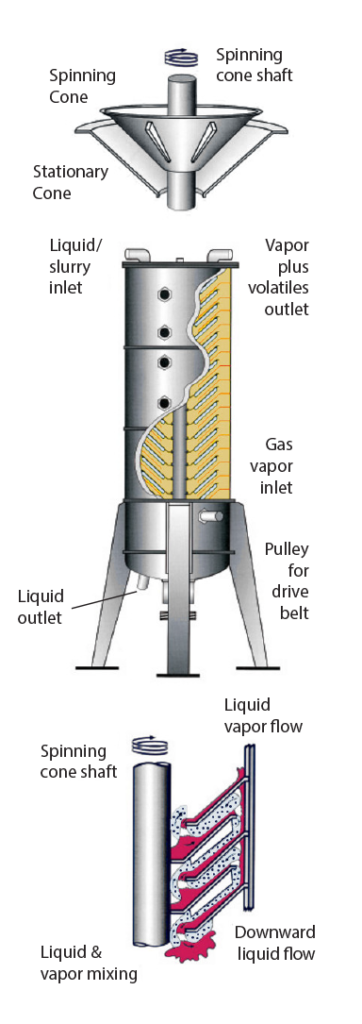
4. Taste of lower alcohol wines
Surely, the taste of lower alcohol wines is the big problem. Maybe it is because our palates are used to regular wines, but lower alcohol wines tend to lose floral aromas or tannins due to the production methods using heat or membrane. Besides, alcohol brings some sweetness, body and texture. But things have changed. The increase in demand for lower alcohol drinks has encouraged producers to find ways to make better taste. The technology is improving every year, and some of them are now very drinkable. For example, Spanish producer Torres has pioneered lower alcohol wines, and its Natureo wines are very good and now have 0.0% alcohol. Australian producer Rawson’s Retreat makes pleasantly fruity wines with 0.5% alcohol. When it comes to spirits, Gordon’s has created Ultra Low Alcohol gin and tonic. Ketel One Vodka produces low-abv Botanical range and Seedlip offers sophisticated non-alcoholic spirits. The increase in demand for complex, more challenging options means the lower alcohol drinks category is one of the most exciting trends and biggest opportunities in the present drinks industry.
5. Alcoholic harm to health
The quality of lower alcohol drinks is improving now, but drinking too much will come to nothing. According to UK Chief Medical Officers’ low risk drinking guidelines, it is the safest not to drink more than 14 units a week. (1 unit is 10mL or 8g of pure alcohol, 76mL of 13% wine, 25mL of 40% whiskey, 250mL of 4% beer.) Reducing the number of units helps to avoid the risk of some serious illnesses such as cancer, liver and heart disease and high blood pressure. Also, it benefits the health: deeper sleep, more energy, better concentration, better skin and slimmer waistline. Furthermore, we can save more money. (Tax breaks for low alcohol.)
6. Outlook for lower alcohol drinks
From the facts above, lower alcohol drinks will become more popular. They are no longer negative drinks only for drivers and expecting mothers. There are even alcohol-free bars, also known as dry bars. (These days, young people tend not to drink alcohol. I think the cause is, especially in Japan, the increase of young people spending time playing alone at home, that is the diversification of amusements and the individualization of society, a kind of individualism.) Heineken has promoted non-alcoholic beer in restaurants. (Non-alcoholic drinks have no tax, so makers can make the higher proportion of profit.) In countries where alcohol is illegal, non-alcoholic drinks are permitted. So, the promotion can be done in those countries, too. (The rate of the increase in Islam and Hindu population is higher than the world average.) In Japan, lower alcohol drinks are accepted enough to occupy a corner in liquor shops. And we can use them as a gift for those who are weak in alcohol or in celebration of an achievement in the place of work. We can recommend them to those who cannot take alcohol because of disease or those who have a party with kids. This is the time when it is important to cope well with stresses and strains. Lower alcohol drink is now one of positive choices in drinking.
Today’s maxim
The producer’s job is not to leave it to nature, but to actively approach grapes and wine and lead them to his own ideal wine style.
Kawai Kaori ’USUKE BOYS, Japanese wine’s revolutionists’
Weekday wine
Le Petit Chavin Rosé Sparkling (Alcohol Free, Made with spinning cone column)
Appearance is medium salmon. Flossy but nicely vigourous bubbles. Medium(+) intensity aromas of strawberry candy, muscat grape and crushed raspberry. Also floral such as honeysuckle. Off-dry, medium acidity, smooth low tannin, medium body in spite of alcohol free. Medium flavour intensity of grapey character. Finish is short but longer than any other alcohol free sparklers I’ve ever had. Besides, acidity lasts to its finish. Tannins support its body and make it more drinkable or bring satisfying quality of a drink. Goes well with strawberry-flavoured cheese.
Technical Sheet⇒(https://petit-chavin.com/en/wines/petit-chavin-sparkling-rose)
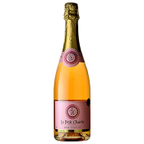

日本ソムリエ協会認定 ワインエキスパート、SAKE DIPLOMA
日本ソムリエ協会 ワイン検定 講師
WINE & SPIRIT EDUCATION TRUST 認定 Level 3
平成25年度 一般社団法人松阪市観光協会「古事記感想文」優秀賞
Songes de Vignes(ソーンジュ ドゥ ヴィーニュ)とはDreams of Vines「葡萄樹の夢」 の意
-葡萄の樹々は、己が果実が如何なるワインに為って欲しいと夢見るのか
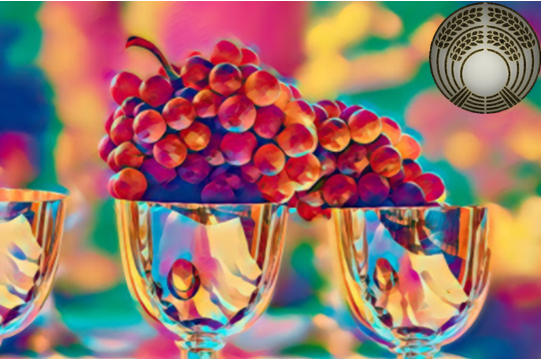
“The 21st Bottle : Lower alcohol wines (and spirits)” への35件の返信
コメントは受け付けていません。